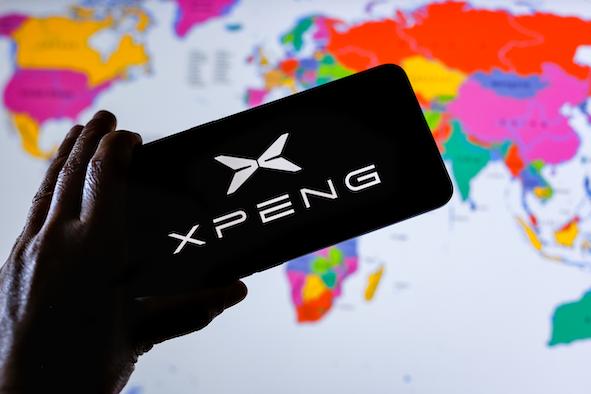In 2023, the Government of Canada and the Province of Ontario announced plans to offer a combined $28 billion in subsidies to Volkswagen and Stellantis to build electric vehicle battery plants in Canada. That’s a lot of money. But when you take a look at the global picture, we are thoroughly outgunned.
Just look at the estimated US$80 billion that the Chinese government has spent on subsidies for their domestic shipbuilding industry. And Mario Draghi, economist and former prime minister of Italy, argues the European Union needs €800 billion to stay in the game. Or pull out any number of the clean energy-funding programs in the 2022 US Inflation Reduction Act. Because so many of the government supports rely on loan programs, it’s tough to say how much the total package is worth, but credible estimates say it could be greater than US$1 trillion.
Of course that’s just the public part. The three major economies also feature more than 400 of the Global 500 firms and an even more dominant share of global unicorns. Perhaps the saddest example of just how overmatched Canada is in this game, though, is that the federal government is being outspent by individual companies.
In 2024, OpenAI expects to burn through more money on technology development and growth than the Government of Canada will spend on innovation support. In fact, it’s not particularly close. OpenAI expects to burn through US$5 billion of capital — notwithstanding its soaring revenue growth, projected to reach US$5 billion annualized by the end of 2024 — and Canada’s 2024 federal budget earmarks $4.6 billion.
Adjusted for the currency exchange rate, the Canadian federal government will be spending roughly US$1.7 billion less than a single leading American technology company is dropping on its development program. If Canada were a company, it would not crack the top 20 list of US companies’ spends on artificial intelligence (AI) research and development (R&D).
Unfortunately for Canada, we cannot resign ourselves as a country to the fact that we’re overmatched and call it a day; in 2023, worldwide, governments implemented more than 2,500 industrial policy interventions. If we aren’t playing this game, we will get beaten by the countries who are playing, aggressively. And frankly, there’s good reason to be engaging in industrial policy right now, as we argue in our recent policy report — Building Winners: Strategic Procurement in the Age of Innovation.
Industrial policy largely fell out of favour among economic thinkers in the twentieth century, as researchers argued that government spending on targeted economic development tended to be wasteful and prone to dysfunction. However, Building Winners argues that the nature of innovation itself is meaningfully different in the twenty-first century in several important ways, because economic and technological conditions have changed materially.
The pace of innovation has increased. This rapid pace means that companies often have less time to earn back a return on R&D investments, so it becomes a safer decision for companies to delay developing technologies that might not have an immediate payoff.
At the same time, new families of technology such as AI and quantum could become era-defining general-purpose technologies, and the nature of these technologies has become a winner-take-most contest defined by a small number of global superstar firms. Canada will not be able to meet this moment using traditional innovation funding methods such as tax credits and research grants. However, Canada is currently failing to use the most powerful government tool for economic development.
Procurement is a tool of government policy that can engage with all of these issues. Government procurement is not simply about buying staplers, and other established products that already exist in the marketplace to fill a clearly defined need. At its best, government procurement can be used to prompt the private sector to develop new and innovative solutions to meet societal needs.
What’s more, Canada has a lot of potential economic firepower to deploy using government procurement. Public procurement makes up about 15 percent of our GDP and 27 percent of public spending. But Canadian governments do not systematically use this demand-side buying power as an innovation policy lever, preferring to use supply-side measures such as tax credits and grants instead, unlike in other countries such as Finland, the United Kingdom and the United States, which do use procurement effectively.
Procurement is thus Canada’s sleeping innovation policy giant. With the government acting as a large anchor buyer, procurement can de-risk the investments in innovation and fortify mid-sized domestic firms that have not yet achieved the status of global superstar companies. Perhaps most importantly, as a central player, the government is well-positioned to bring innovation networks together and organize the firms, researchers, educational institutions and community organizations.
In an economy defined by cycles of disruption, you can’t remain prosperous without innovation. And it is increasingly clear that you can’t have a thriving innovation economy without industrial policy. This is not a change of heart or mind about industrial policy from the 1980s or 1990s — it’s a change of economic and technological conditions. Innovation is an essential component of wealth creation and productivity growth in every major advanced industry in the world — and so is industrial policy.
Done strategically, procurement can help propel Canadian firms into global innovation leadership positions, fuelling growth at home. And, as we describe in Building Winners, it cuts to the heart of the nexus of problems that Canada is confronting — innovation, productivity and scaling firms.
A version of this piece first appeared in The Globe and Mail.



